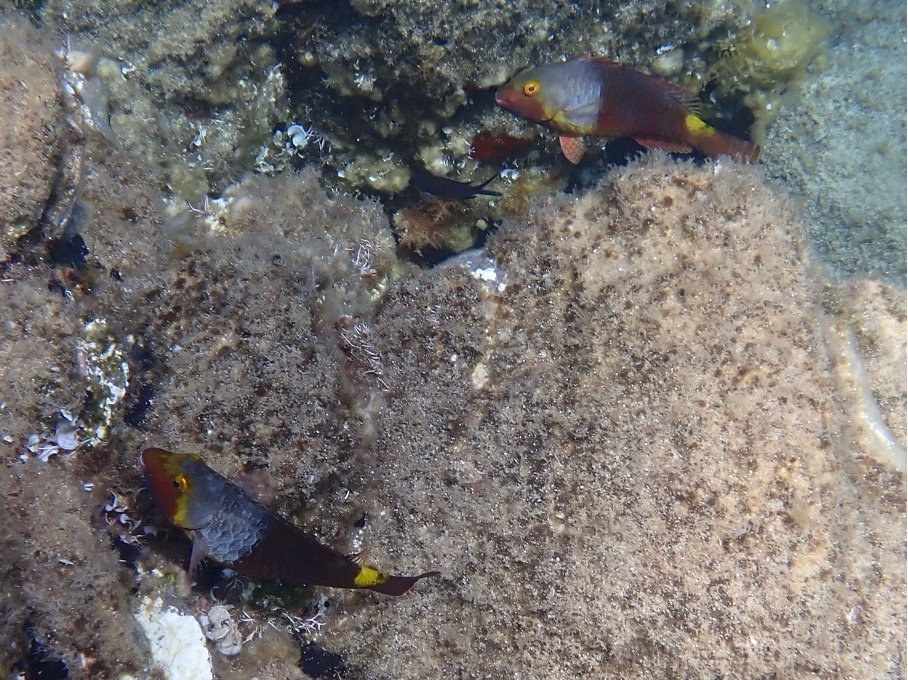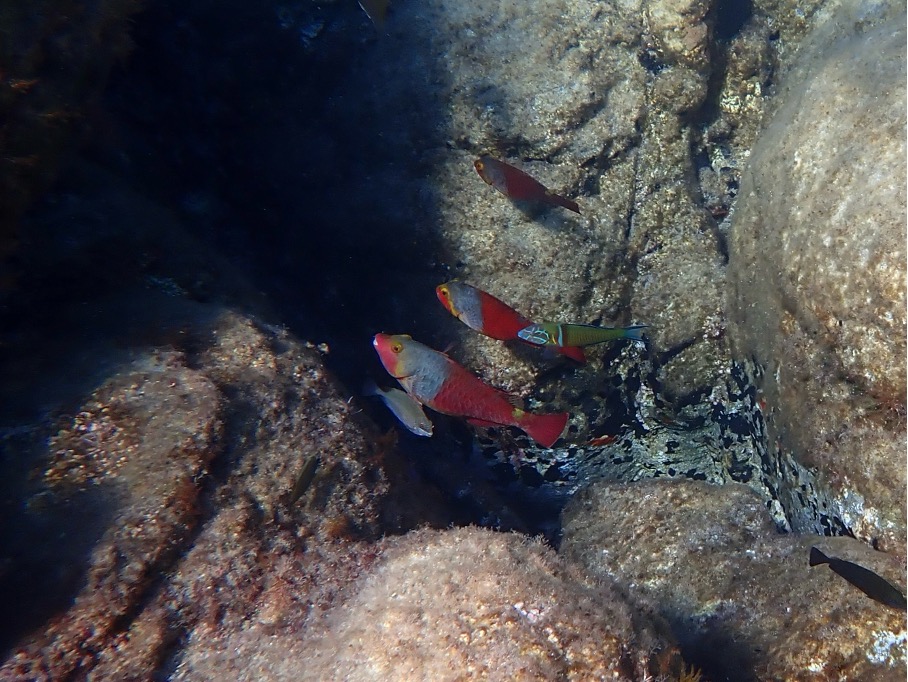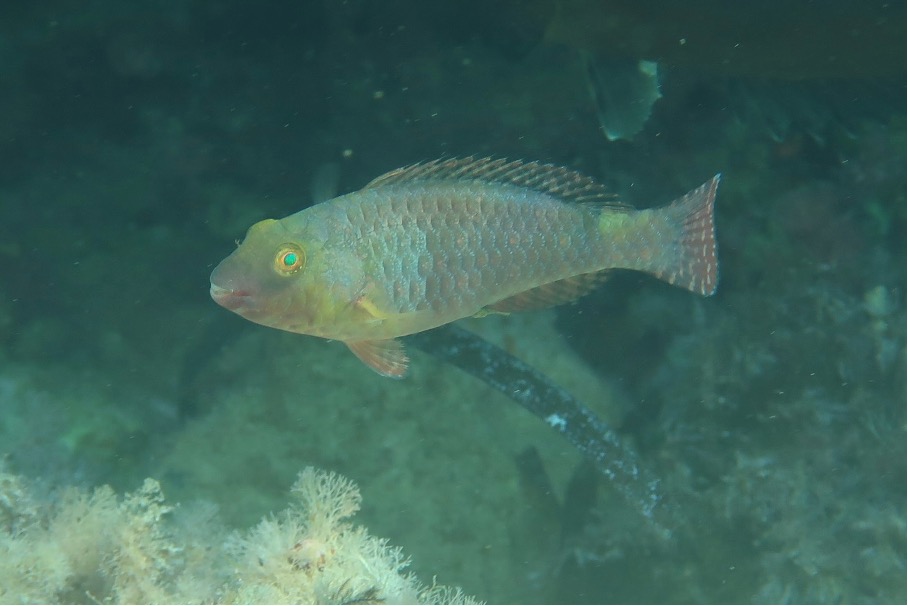A bit everywhere, from rocky to sandy bottoms …
The parrotfish, Sparisoma cretense (Linnaeus, 1758) – Scaridae

Sparisoma cretense is the only parrotfish in the Mediterranean.
Its teeth, fused together, form a white ‘beak’ allowing to feed on algae and encrusting animals by scraping rocks. These fishes live in small groups on rocky bottoms up to 50 m deep. Their size reaches 30 to 50 cm, the males being the largest. All individuals have very large scales, clearly visible on their sides.
Females are very colourful: their bodies are pinkish to bright red with a large gray patch on the back of the head; each eye is ringed in yellow or even crossed by a yellow band which extends up to below the pectoral fins. A yellow band also surrounds the base of the caudal fin.

Males are duller, bluish gray with a black spot behind the operculum (see picture below).


Juveniles are gray to mottled with black or brown; they gradually take on the colour of adults as they grow (see above picture).
Reproduction. Males are rather solitary and territorial while females and juveniles live in small groups. Sparisoma cretense is a gonochoric species (separate sexes), which is surprising because the majority of Scaridae change sex during their life, first being female then male (protogynous hermaphrodites). Breeding takes place in summer (July to September). It takes place either within a harem where a few females are ‘guarded’ by a male or through chances encounters between groups of males and females. Gametes released in the water are fertilized and further development (from eggs to larvae) takes place in open water.
Geographic distribution. Mediterranean (mainly the Eastern basin), Eastern Atlantic (from Portugal to Senegal, also including Canary Islands, Cape Verde, Azores and Madeira).
Coming …
The rainbow wrasse, Coris julis
The ornate wrasse or turkish wrasse, Thalassoma pavo